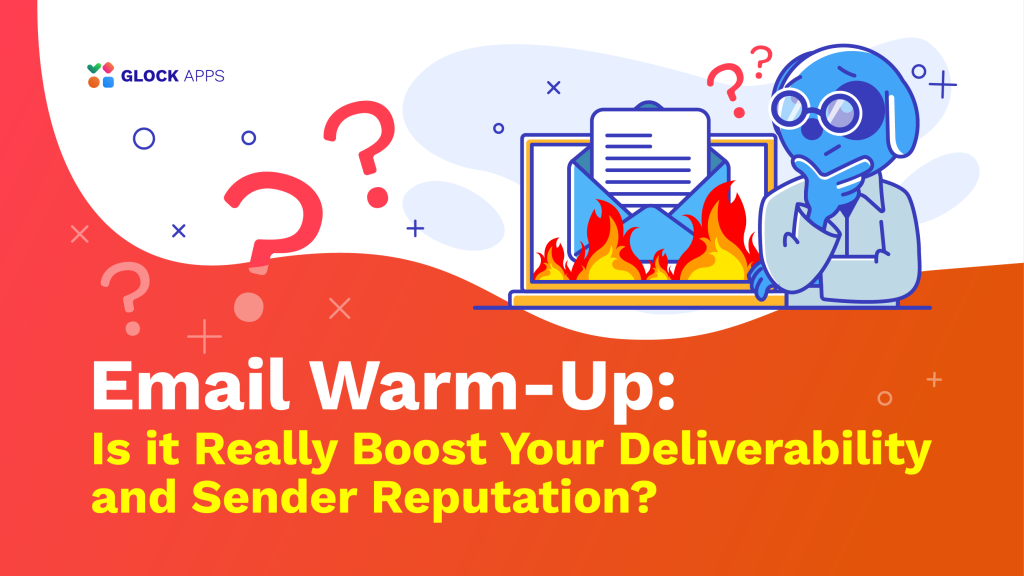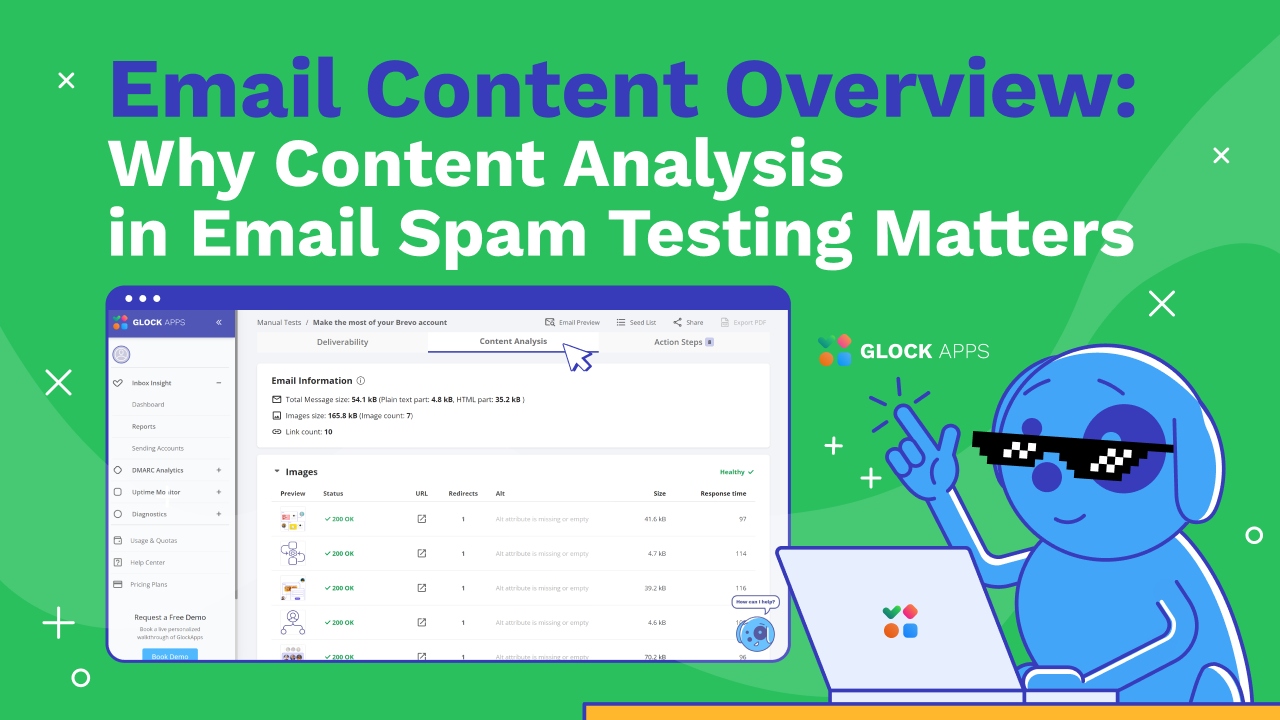Email Warm-Up: Does it Really Boost Your Deliverability and Sender Reputation?

What Is Email Warm-Up?
Just imagine a situation where your company needs to introduce itself to someone for the first time. You wouldn’t start with a long conversation about your history and values right away, would you? Instead, you would probably start with small talk, building rapport and trust step by step. An email warm-up is something like that because it allows you to build trust with email service providers gradually.
When you start sending emails from a new domain or IP address, email warm-up is the process of progressively familiarizing yourself with email providers like Gmail or Outlook. At first, you start by sending a small number of emails and slowly increase the volume over time. In this simple way, you show these providers that you are a legitimate sender and not a spammer. So it’s basically about starting a little to make sure your emails are being seen and read by the people you’re sending them to. This tactic helps your emails get to your main inbox rather than getting lost in the spam folder.
Why Is Email Warm-Up Important?
As technology advances, from B2B technology companies to e-commerce giants, non-profit organizations, and other firms operating in diverse sectors rely on warm-up services to make sure their emails reach the right inbox. Whether it is lead generation, sales promotion, or increasing customer loyalty, a well-done warm-up is considered essential to maximizing email marketing success.
By implementing an email warm-up process, different types of senders can build a positive reputation with ISPs and improve delivery rates and overall success of their email marketing efforts.
Email warm-up is especially important for:
- New Email Senders
People and organizations who are launching a fresh email marketing campaign or beginning to send emails via a new IP address or domain.
- Inactive or Dormant Email Lists
Lists that have not been used for a long time, as ISPs may perceive a sudden increase in email activity from these lists as suspicious or indicative of spam.
- Email Marketers Switch to a New Email Service Provider (ESP)
Marketers who switch ESPs may need to warm up their domain again as ISPs recognize the sender reputation associated with each IP address.
- Marketers Send to Cold Lists
Lists obtained through lead generation efforts or other means where the recipients may not be familiar with the sender or have not interacted recently.
Manual vs. Automated Warm-up Techniques
Today, marketers, looking for how to warm up a new email domain, can always choose between automatic and manual techniques based on personal factors such as resources, experience, and campaign goals, or even use a combination of both for optimal results.
Here are two technical ways to warm up your email:
- Manual
Manual warm-up requires marketers to manually send a controlled number of emails over time, tracking engagement metrics and adjusting strategies accordingly. Although it offers more control and customization, allowing you to personalize interactions with recipients in real time, it requires more time and effort.
- Automated
Automatic warm-up involves using specialized software to slowly increase the volume of emails sent and adapting sending patterns based on recipient responses. These platforms automate the process, save time, and ensure a consistent warm-up strategy. They can rotate IP addresses, personalize messages, and provide analytics for optimization. Automated warm-up is efficient but may lack the hands-on control of manual methods.Warming up your account properly is a key step to avoid having your emails flagged as spam. This means making your sending account look as legitimate and human as possible before using an automated email tool.
Different Types of Email Warm-Up Strategies
Firstly, it’s also important to understand which warm-up you need specifically for your marketing program.
- Email Warm-up
This type means gradually increasing the number of emails sent over time to establish trust with ESPs and is typically used for preparing personal or professional email accounts like Gmail or Outlook for bulk email sending.
- IP Warm-up
When moving to a new IP address for email sending, conducting an IP warm-up is important. While a shared IP address typically doesn’t need warming up, opting for a dedicated IP means starting from scratch in terms of reputation. This can cause concern for ISPs if there is a sudden increase in email amount. With an IP warm-up, the output of emails systematically increases from a small volume, which allows ISPs to closely monitor the feedback of recipients. Positive interactions, like openings and engagement, build trust with providers, which ultimately leads to improved deliverability over time.
- Domain Warm-up
Similar to IP warm-up, but focuses on establishing credibility and reputation for a new domain itself. Domain warm-up takes into account various factors such as domain longevity, industry sector, and registration history. Creating separate subdomains for different email types, such as transactional and marketing, can further help separate reputations and optimize deliverability.
Why Is Email Warm-Up So Popular?
Over the years, companies that have been implementing email marketing automation and sales engagement have seen a noticeable change: despite increasing cold email volumes, open and response rates have stagnated or decreased.
This trend can be attributed to the growing proficiency of email service providers in identifying and segregating marketing and sales emails. Consequently, such emails are often diverted away from the priority inbox, landing instead in spam, promotions, or other less visible folders. As a result, prospects miss the opportunity to engage with and read these messages within their primary inbox view.
Email warm-ups have become very popular among marketers. Leading brands across industries rely on this important strategy in hopes of boosting their email campaigns. But does it really guarantee that your messages will end up in the inbox and not get lost in spam filters? Let’s dive deeper.
Email Warm-up: Separating Myth from Reality
As an email marketer, you’re bound to come across a number of myths and find numerous companies offering affordable email warm-up tools, claiming to improve your deliverability. However, in reality, many of them fail to deliver tangible results. They typically employ strategies like pooling your email address with others to artificially boost response rates. While this approach may sound promising, it’s important to carefully inspect providers for evidence of a real impact on your email performance.
Even if email warm-up can be a useful tactic to start your campaigns, it should be viewed as just one component of a comprehensive email marketing strategy. To sustain long-term success, you should focus on nurturing honest relationships with your subscribers, delivering them valuable and relevant content, consistently monitoring your deliverability metrics, and adapting strategy to align with evolving industry trends.
Here are some additional points to consider when warming up your email:
- Temporary Impact.
While email warm-up initially improves deliverability, its effectiveness can diminish over time without consistently maintaining sender reputation and engagement rates. Poor mailing practices or list quality can lead to lower email deliverability indicators.
- Limited Control.
Email warm-up relies on factors such as recipient engagement, ISP algorithms, and email client preferences, which are beyond your direct control. Despite following warm-up best practices, important factors such as subscriber behavior or ISP policy changes can still affect your campaign.
- Resource Intensive.
The truth is that email warm-up takes about 1 month, while domain warm-up should take at least 3 months. So, as you can see, implementing this process takes a lot of time, effort, and resources, especially for large mailing lists or complex campaigns. Some marketers may question the ROI of devoting resources to warm-up compared to other marketing strategies.
- It’s Not a Substitute for Quality Content.
Although email warming can improve inbox placement, it does not guarantee that recipients will somehow better engage or convert with the emails they receive. Ultimately, the true success of the email marketing campaign depends on factors such as regular deliverability testing and delivering relevant, valuable, and quality content.
- Potential for Spam Filtering.
Without careful monitoring, email address warm-up practices may accidentally trigger spam filters, limiting email deliverability. In some cases, artificially inflated indicators can lead to negative consequences, for example, being marked as spam or harming sender reputation among providers.
- Risk of Subscriber Fatigue and Email List Churn.
Intensive warm-up strategies can overwhelm recipients and lead to disengagement if not carefully implemented. When recipients feel bombarded with too many letters, they may become annoyed, leading them to unsubscribe from your email list. This phenomenon is known as list churn, which we explained in detail in this article.
Email Warm-up in 2025: Still Helpful or Outdated?
In 2025, a key question in email deliverability is whether email warm-up tools are still effective. Let’s be real, times have changed. Many email warm-up tools that used to be helpful are beginning to lose their effectiveness. Mailbox providers such as Gmail, Outlook, and Yahoo are much more advanced now. They can easily detect bot-like patterns and interactions that come from warm-up networks.
If you’re relying on warmup tools to boost your sender reputation, be careful: you might just be wasting your time. Great metrics on their internal dashboards often don’t translate to real-life inbox placement. Even worse, repetitive warm-up templates and fake engagement can hurt your credibility.
That doesn’t mean warm-up is totally dead. It means your overall strategy needs to grow. Don’t just rely on warming-up processes. Focus on real conversations and engagement. If you’re launching a new domain or switching providers, yes, gradually increasing volume still makes sense. But forget about tricking the system with automated openers and templated emails. Warm-up only works when it’s part of a bigger deliverability strategy: proper authentication, consistent testing, segmentation, relevant content, and actual replies from your recipients.
Closing Thoughts
Overall, while email warm-ups can be a valuable tactic for improving deliverability and inbound placement, they are not a panacea for all email marketing challenges.
You should always approach warm-up practices with realistic expectations and complement them with a holistic approach that prioritizes content quality, audience engagement, and continuous optimization.
It happens that you have taken all the necessary actions, but the situation has not changed. Then the question arises, why do my emails still end up in the spam folder if I have already warmed up my domain and IP?
Some important authentication methods like DMARC, SPF, and DKIM need to be implemented if you want to reach the inbox. Also, remember that your recipients have a powerful influence on your deliverability metrics when they push the spam button in their inbox. So, always make sure that you’ve asked for consent and that your content provides enough value and relevance. To check the issues in your deliverability, try the GlockApps tool, which helps you find all potential problems and troubleshoot them in time.



